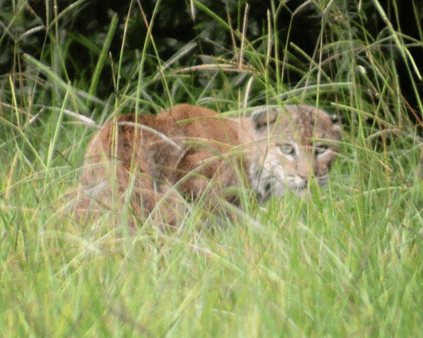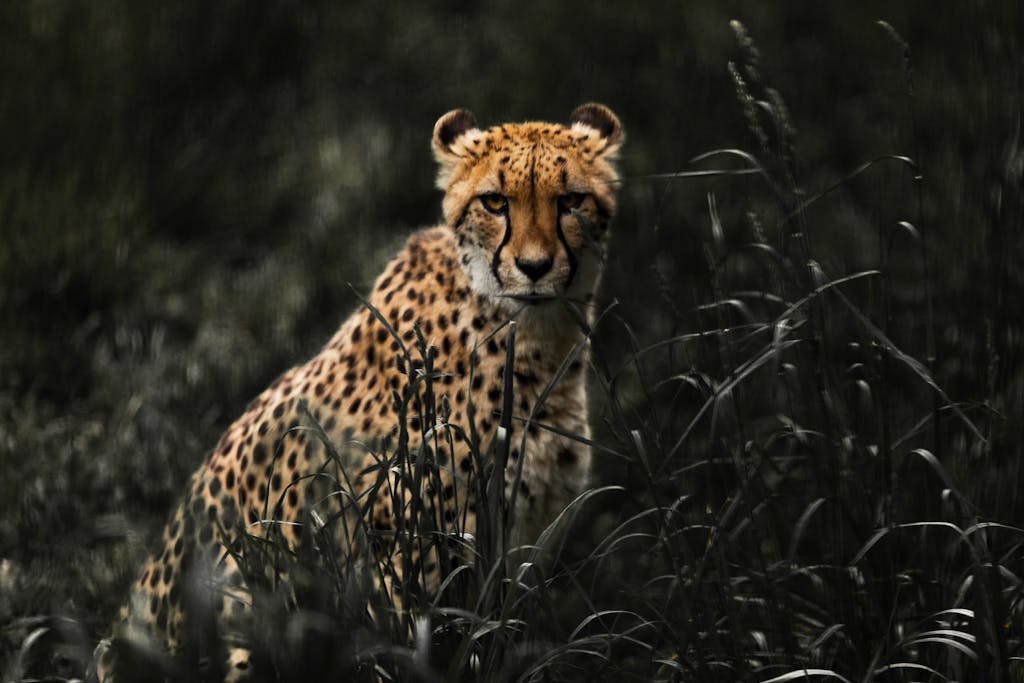Ethics of Relocation of Wildlife
Human-wildlife conflicts vary from “significant crop and forestry destruction to disease transmission, collisions with vehicles and aircraft, nuisance behavior in urban settings, damage to buildings, predation on livestock and game species and attacks on humans” (Massei et al. 2010). “As burgeoning human populations move further into previously uninhabited areas,” conflicts and the frequency of these conflicts escalate, “particularly in urban and suburban areas, and is expected to grow further in the near future” (Dickman 2010, Massei et al. 2010).
Wildlife translocations are valuable to conservation initiatives and consequently, the world’s ecosystems. Conservation programs typically involve endangered species, and depend on the viability of populations rather than the survivability of individuals. “In this context, the loss of some individuals as a result of translocation is viewed as a potential but acceptable risk” (Massei et al. 2010). Conversely, wildlife causing conflicts with people are typically common or abundant species, and frequently involve individual animals.
As a technique for mitigating human-wildlife conflicts, people perceive translocation as humane, compassionate, and effective. “The public perception that an animal moved from one place to another will ‘live happily ever after’ is widespread” (Craven et al. 1998). Letty et al. (2010) conclude that “a translocation must be a severe test for the translocated individuals, whatever the species, especially as, unlike dispersal, this movement does not result from natural and deliberate behavior of the individuals themselves. As such, translocations can significantly impact individual survival. Dickens et al. (2010), Massei et al. (2010), Letty et al. (2007), and Craven et al. (1998) document the following biological, ecological, and welfare ‘costs’ of translocating wildlife.
• extensive post release movements
• disorientation
• persistence of ‘problem’ behavior
• response to capture, handling, and transport
• predation
• competition for resources
• territoriality
• social disturbance
• behavioral inability
• transmission of diseases and parasites
• habitat unsuitability
• novelty of environment
• high mortality
Extensive post release movements and homing behavior occur among translocated animals, increasing their exposure to roads and consequently, their vulnerability to vehicle collisions. Dickens et al. (2010) describes ‘stress avoidance behavior,’ whereby translocated animals attempt to escape “the stress of the novel release [environment] by controlling the situation through an active searching for familiar home range.” In a study by Comly-Gericke and Vaughn (1997), the survival estimate for translocated nuisance black bears was 0.23, with 74 percent of mortalities occurring within 120 days following release. Automobile collisions were the predominant cause of mortalities, accounting for 10 of 19 fatalities.
Disorientation due to novel environments imparts a competitive disadvantage relative to locating food and refuge.
Survivability necessitates the finding of critical resources within “an unknown environment in which they have no landmarks regarding their basic vital requirements.” (Letty et al. 2007). Additionally, wildlife habituated to anthropogenic food and shelter may leave release sites to seek familiar surroundings, thereby transferring ‘problem’ individuals from one location to another.
Chronic stress, a potential consequence of the acute stressors of translocation (i.e. capture, handling, and transport) suppresses the immune system, increasing the susceptibility of translocated animals to infectious disease and mortality due to disease (Dickens et al. 2010).
Predation due to interspecific competition, and surplus killing by resident predators, may occur, where “even a few predators can rapidly cause great damage to prey populations” (Letty et al. 2007). Additionally, naïve prey species originating from urbanized localities are extremely susceptible to predation. “For example, when 38 nuisance adult grey squirrels were removed from suburban sites and relocated to rural areas, 97% died within 3 months from their release, mainly as a result of predation and vehicle collisions” (Adams et al 2004).
Rosatte and MacInnes (1989) document a 50% mortality rate within 3 months following the translocation of urban raccoons. Additionally, other individuals “could not be located or were found to be losing weight at a time when they should have been storing fat prior to winter denning” (Craven et al. 1998). Consequently, the authors conclude that the mortality rate may have approached 75% during the first year.
 The threat of transferring diseases and parasites to either translocated individuals or recipient populations is considerable. “Disease agents carried by the translocated animals may benefit from the stress-mediated immunosuppression, causing more severe disease and negatively affecting survival probabilities” (Fernandez de Mera 2003). Craven et al. (1998) specify that animals may have an infectious disease without exhibiting clinical symptoms. Furthermore, wildlife translocations, particularly those resulting from human-wildlife conflicts, are undertaken with no veterinary input. “There has been a tendency to assume that if there are no legal constraints on translocation, it must be safe for it to proceed” (Sainbury, wmenews.com). Massei et al. (2010) emphasize the danger of assuming that “neighboring populations share similar pathogens and that a disease risk assessment is relatively unimportant for short-distance translocations.”
The threat of transferring diseases and parasites to either translocated individuals or recipient populations is considerable. “Disease agents carried by the translocated animals may benefit from the stress-mediated immunosuppression, causing more severe disease and negatively affecting survival probabilities” (Fernandez de Mera 2003). Craven et al. (1998) specify that animals may have an infectious disease without exhibiting clinical symptoms. Furthermore, wildlife translocations, particularly those resulting from human-wildlife conflicts, are undertaken with no veterinary input. “There has been a tendency to assume that if there are no legal constraints on translocation, it must be safe for it to proceed” (Sainbury, wmenews.com). Massei et al. (2010) emphasize the danger of assuming that “neighboring populations share similar pathogens and that a disease risk assessment is relatively unimportant for short-distance translocations.”
“But, not all individuals are equally negatively affected by the process; individual characteristics, source populations, release environments, and translocation techniques can all lead to varying outcomes. The real causes of failure are not always obvious as translocation is a complex process of which the chances of success depend on many different factors that concurrently act, and not all of them are likely to be equally important for all species”(Letty et al. 2007). Nonetheless, without equivalent activities aimed at eliminating or mitigating the source of conflict (e.g. feeding wildlife, building entry points, backyard brush piles), one must consider “the potential for reinvasion or reoccurrence of the problem that led to the translocation” (Massei et al. 2010).
If you are still interested in pursuing translocation, supportive measures can be employed to minimize the probability of mortality and dispersal movements. It is generally recognized that ‘soft’ release, which includes supportive measures to assist animals to adapt to the new environment, increases significantly the success of a translocation compared with ‘hard’ release in which animals are released immediately after capture. Support ranges from acclimatization enclosures to provision of artificial habitat, supplementary feeding, predator control, and pre-release health screening (Massei et al. 2010). Additionally, post-release monitoring is necessary to determine translocation success. Please be aware that this type of ‘translocation program’ is complex, labor intensive, expensive, and offers no guarantee. In contrast, exclusion is consistently effective, humane, long lasting, and does not require the handling of animals.
Literature CitedAdams, L. W., J. Hadidian, and V. Flyger. 2004. Movement and mortality of translocated urban-suburban grey squirrels. Animal Welfare 13: 45-50.Comly-Gericke, L. M., and M. R. Vaughn. 1997. Survival and reproduction of translocated Virginia black bears. Int. Conf. Bear Res. and Manage. 9: 113-117.
Craven, S., T. Barnes, and G. Kania. 1998. Toward a professional position on the translocation of problem wildlife. Wildl. Soc. Bull. 26: 171-177.
Dickman, A. J. 2010. Complexities of conflict: the importance of considering social factors for effectively resolving human-wildlife conflict. Animal Conservation 13: 458-466.
Fernandez-de-Mera, I. G., C. Gortazar, J. Vicente, U. Hofle, and Y. Fierro. 2003. Wild boar helminths: risks in animal translocations. Veterinary Parasitology 115: 335-341.
Letty, J., S. Marchandeau, and J. Aubineau. 2007. Problems encountered by individuals in animal translocations: lessons from field studies. Ecoscience 14: 420-431.
Massei, G., R. J. Quy, J. Gurney, and D. P. Cowan. 2010. Can translocations be used to mitigate human-wildlife conflicts? Wildlife Research 37: 428-439.
Rosatte, R. C.., and C. D. MacInnes. 1989. Relocation of city raccooons. Proceedings of the Great Plains Wildlife Damage Conference 9: 87-92.
Sainsbury, A. W. n.d. Health surveillance of translocated wild animals. Wildlife Middle East News. Retrieved from www.wmenews.com.
https://www.rdwildlife.com/ethics-of-relocation/




